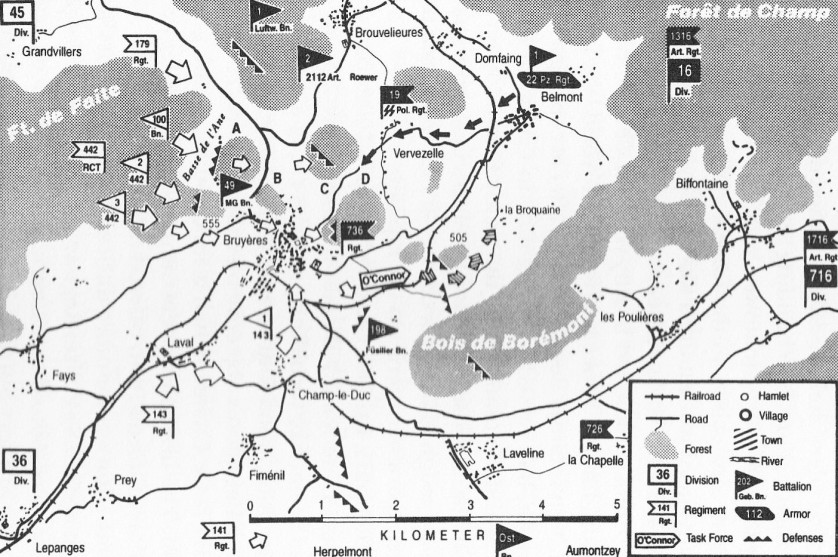Nestled in the beautiful valley. on the western edge of the Vosges. lies the small town of Bruyères. Roman relics found nearby date its origin to the 4th century A.D. Two centuries later, Ambron, son of Clodion-the-Long-Haired, built a castle of one of the four surrounding hills. In October 1944 a new chapter was to be added to the history of Bruyères, one written with the blood of Americans, Frenchmen and German locked in fierce and brutal combat on those four hills and the mountains streching east toward St. Dié. The town of Bruyères and points south of it were defended by the 716th Infantrydivision, commanded by 52 year old artillery officer Generalleutnant Wilhelm Richter.
On the American side, the attack was led by the 36th Texas Division. On September 29 1944, anticipaiting the American assault, the Germans blew up the railroad tunnel on the Bruyères-Épinal line ans set the station on fire.On the same day American artillery shells started to fall on the town and the sourrounding hills-the first of thirty thousand.
On October 15 1944 the assault beagn. Spearheading the drive was the 442nd Rgt Combat Team, led by fifty year old Charls Wilbur Pence. At 0800 hours, Lt. Col. Gordon Singles's 100th Btl as well as Lt. Col. James Hanley's 2nd Btln crossed the line of departure. The 3rd then closed in reserve behind the 100th. The 522nd Field Art Btl was in direct support, and the 232nd Combat Engineer Comp played its usual role, lifting mines and reducing blocks so supplies could move. The attack launched on October 15 1944 progressed slowly all that day and the next, consisting of a yard by yard advance in the face of a determined enemy.




